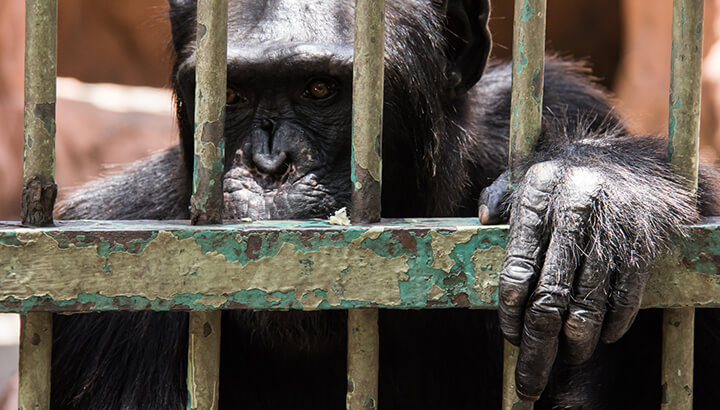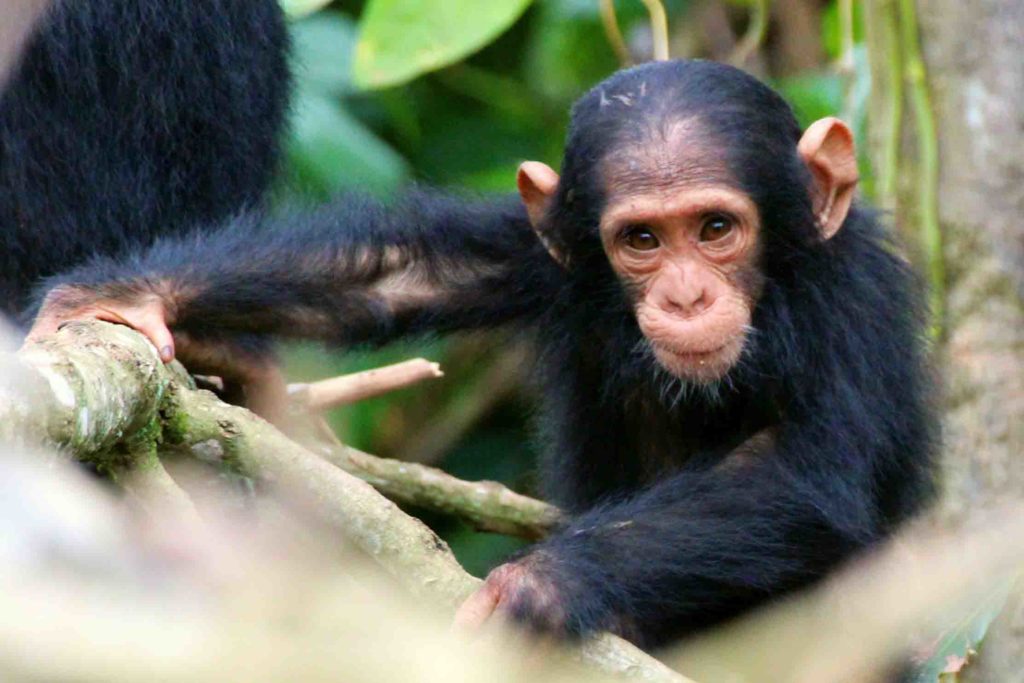1. Chimpanzees are usually found in the rain forests, woodlands, and grasslands of Africa – specifically Central and West Africa.
English Language Learners Definition of chimpanzee: an intelligent animal that is a type of ape and that lives mostly in trees in Africa See the full definition for chimpanzee in the English Language Learners. Chimpanzee infants are totally dependent on their biological mother and learn life skills from living in their chimpanzee family. When infant chimpanzees are taken from their families, they do not develop appropriate species social skills, and do not know how to interact with other chimpanzees.
2. On average, chimpanzees only stand about 4 feet high and weigh between 90 and 120 pounds. Females typically weigh between 60 and 100 pounds.
3. Female chimps only give birth about once every five or six years when they are in the wild. Their offspring often stay with the mother for as long as 10 years after birth. Their gestation period lasts between 8 and 9 months, much like a human’s.
4. When a female chimpanzee has her first baby, she is usually unsure about how to care for it. But she watches other mothers and uses her own instincts to learn how to care for her baby.
5. When a mother chimp dies, the older offspring often begin caring for the smaller chimps. Also, some unrelated chimpanzees will “adopt” the younger chimps and take care of them until they are old enough to care for themselves.
6. Chimpanzees and humans share as much as 98 percent of the same DNA. In terms of biology, a chimpanzee’s DNA is closer to a human’s than it is to a gorilla’s.
7. Other than humans, chimpanzees use tools more often and for more purposes than any other animal on earth.
8. In general, chimpanzees have been measured to be six to seven times stronger than humans.
9. Chimpanzees can contract many of the same diseases that humans can get, including malaria, Ebola, and several others.
10. When in captivity, a chimpanzee can learn many things, including human sign language. One chimp by the name of Washoe has learned more than 240 hand signs for communicating with others.
11. Chimpanzees have been observed laughing when they play with others.

12. Chimpanzees do not take long-term sexual partners. As a result, there is no competition when choosing another chimpanzee to mate with.
13. The mating ritual between chimpanzees only takes between 10 and 15 seconds. In most cases, the chimps are also doing something else, such as eating, while engaging in mating.
14. Chimpanzees can live as long as 50 years when they are in the wild. They can live up to 60 years when they are in captivity.
15. Male chimpanzees almost never leave the community in which they were born. Females, however, often venture out and migrate to other communities during their adolescence.
16. Chimpanzees are social creatures. They spend much of their time grooming each other, tickling each other, and hugging and kissing each other.
17. When boredom strikes, chimpanzees often make up games and activities to entertain each other.
Chimpanzee Diet
18. Chimpanzees make a new nest almost every night in a different location.
19. Chimpanzees prefer to walk on all fours, but they can walk on just their hind legs.

20. Chimpanzees mostly communicate with their lips without making any sounds. However, they do have noises that they make that can be heard up to a mile away if they need to call other members of the group.
21. The skin of a chimpanzee gets darker as it gets older.
22. One of the most dangerous predators for the chimpanzee is the leopard because they are one of the few animals that can live both on the ground and in the trees, just like the chimpanzee.
23. A chimpanzee’s diet consists of insects, eggs, honey, bark, leaves, fruits and meat.

24. When chimpanzees feel sick, they know which plants to eat in order to make themselves feel better.
Chimpanzee
25. At the beginning of the 20th century, there were between one and two million chimpanzees on earth. Today, there is believed to be fewer than 300,000 chimpanzees living.
Chimpanzees are one of our closest relatives, sharing an estimated 98% of their genes with humans.Four subspecies have been identified, based on differences in appearance and distribution:

- Western chimpanzee (P. t. verus)
- Central chimpanzee (P. t. troglodytes)
- Eastern chimpanzee (P. t. schweinfurthii)
- Nigeria-Cameroon chimpanzee (P. t. ellioti).
There is a wide range of behavioural differences between groups from different regions, so the loss of any one group represents a loss of cultural as well as biological heritage.
Physical description
The characteristic chimpanzee shape includes arms that extend beyond the knees, opposable thumbs, and a prominent mouth. The skin on the face, ears, palms, and soles of the feet is bare, and the rest of the body is covered with brown to black hair.Chimpanzees usually move on the ground, although during the day they mostly stay in trees, where they also sleep in makeshift nests made with vegetation. This species walks 'on all four', but individuals can also walk on their legs for more than a kilometre. Young individuals sometimes swing from branch to branch.
